
Nine of the Best: Babar Azam’s Streak of Brilliance
The Pakistan captain became the first batsman in cricket history to register 9 consecutive international scores of 50+.
By the end of 2021, Babar Azam had well and truly established himself as a world-class cricketer. He led wonderfully at the 2021 T20 World Cup – with bat and in the field. Despite his Test match numbers lagging slightly behind, his limited-overs numbers were staggering. What followed, however, was simply unbelievable – a string of high scores, including a fourth-innings 196 against arguably the best Test bowling attack in the world. The 27-year-old went past Javed Miandad’s eight 50+ scores in a row across formats, setting the new record by going one step forward.
Most Consecutive 50+ Scores in International Cricket
| Player | 50s | Span |
| Babar Azam | 9 | 12 Mar – 10 Jun 2022 |
| Javed Miandad | 8 | 24 Mar – 25 May 1987 |
| Everton Weekes | 7 | 27 Mar 1948 – 04 Feb 1949 |
| Rahul Dravid | 7 | 17 Dec 2004 – 16 Mar 2005 |
| Kumar Sangakkara | 7 | 03 Feb – 08 Jun 2009 |
| Misbah-ul-Haq | 7 | 12 Nov 2010 – 22 Jan 2011 |
| Chris Rogers | 7 | 17 Dec 2014 – 08 Jul 2015 |
| Kane Williamson | 7 | 12 Jun – 07 Aug 2015 |
| KL Rahul | 7 | 04 Mar – 12 Aug 2017 |
| Steve Smith | 7 | 11 Jul – 12 Sep 2019 |
| Imam-ul-Haq | 7 | 21 Mar – 12 Jun 2022 |
Number 1
On a Karachi pitch that had started to show signs of low bounce and turn, Pakistan were up against the wall with over five sessions of play left, needing 510 to win in the 4th innings of the 2nd Test against Australia. With Pakistan at 21 for 2, Babar Azam walked in with huge roars and cheers from the crowd. Skipper Azam and young Abdullah Shafique grinded with patience, adding 83 by the end of the session – with Babar unbeaten on 47*, having played some lovely drives through the covers.
Post tea, Babar combatted the reverse with his intent, cutting and pulling frequently. Towards the end of the day’s play, Babar had moved into his zone as he brought up his fourth Test ton, much to the delight of the home crowd. At stumps, Pakistan had moved to 192, with the pair having put on 171.
Babar started confidently on the morning of day five, taking a liking to the visitors’ spinners. However, the partnership was soon broken by Cummins, who sucked Shafique into a drive. The 228-run stand was broken, but Shafique had shown incredible grit for his 96.
Shortly after lunch, just as Babar had brought up his 150, Cummins removed Fawad Alam for just 9. In came Mohammad Rizwan, with a massive ask on a fifth-day surface. Despite the apparent demons in the surface, Babar continued to show his class, with the highlight being his trademark cover drive to Mitchell Starc. Babar was now in complete control as he took a liking to Nathan Lyon’s off-spin. He skipped down the track and pummeled one straight as an arrow for a maximum. A couple of cut shots followed as he moved into the 190s.
Babar agonizingly fell to Nathan Lyon for 196, as the extra bounce accounted for one to loop up. The maestro had batted for 603 minutes and ended up with Pakistan’s highest individual fourth innings score ever. Alongside Babar, Shafique and Rizwan played key roles as Pakistan went on to draw the game, which was nothing short of a win given the circumstances. Babar Azam was unsurprisingly adjudged the Player of the Match.
Number 2
With the series at 0-0, Lahore was set to host the final Test match of the historic tour. Australia batted first and put on 391 on a surface that offered little to the bowlers. Pakistan lost Imam-ul-Haq early, but Abdullah Shafique and veteran Azhar Ali put on 150 for the second wicket.
On the back of his stellar 196, Babar Azam strolled in at 170 for 2. The 27-year-old swiftly showed signs of his form, whipping a short delivery through square leg to get going. He then danced down the track, hitting Nathan Lyon for a maximum over his head. Soon after, Azhar Ali was dismissed, courtesy a magnificent return catch by Pat Cummins.
Babar, unfazed by the situation, looked in tremendous control. A stylish flick, followed by a few crisp drives through the offside, moved the skipper to his half-century. Shortly after, Fawad Alam fell to Mitchell Starc, with the scoreboard at 248. Mohammad Rizwan fell moments later, as the reverse swing had begun to cause serious problems. Pat Cummins then ran through the lower middle order, dismissing Sajid Khan, Nauman Ali, and Hasan Ali, with Babar stranded at the other end.
Immediately after, Mitchell Starc dismissed Babar, who fell for a very well-crafted 67. Naseem Shah was cleaned up in the same over, with Pakistan all out for 268, adding only twenty runs for the last seven wickets. The Lahore crowd had witnessed a truly special period of reverse swing bowling by Mitchell Starc and Pat Cummins, who shared nine wickets.
Number 3
In the second innings of the Lahore Test, Pat Cummins’ inspired declaration refueled interest in the contest. Pakistan were set a total of 351 to win the game, with 121 overs to be bowled. The openers started nicely before Abdullah Shafique was snared by Alex Carey for 27. Azhar Ali fell soon after, as Babar Azam came in to bat with the score at 105 for 2.
The right-hander got off the mark with a glorious straight drive which raced down the ground for a boundary. As the ball gripped and turned, Babar was cautious, nurdling the ball for ones and twos. Australia kept pushing for wickets as Pat Cummins led by example again – removing Fawad Alam and Mohammad Rizwan in back-to-back overs. Babar continued to navigate through his innings as he punched Cameron Green for a boundary through the covers. His soft hands earned him another boundary in the third man region as he raised his bat to the gallery yet again.
A few overs later, his resistance was cut short as Nathan Lyon managed to find his outside edge. Pakistan were bundled out for 235, as Australia deservingly won the game and the series. Despite that, Babar had now shown his class consistently at the Test match arena, especially under crunch situations, repeatedly standing tall in the face of Australia’s onslaught until the latter parts of Pakistan’s batting efforts.
Number 4
On a scorching Lahore afternoon, Pakistan and Australia were set to kick off the three-match ODI series. Skipper Babar Azam won the toss, opting to field first, with Pakistan handing out two debut caps. Australia started aggressively before Aaron Finch fell to Zahid Mehmood’s leg spin.
Travis Head continued in his merry way, picking gaps all over the ground. Against the run of play, Head fell shortly after his ton, but he had smoked a 101 from just 72 deliveries. Australia went on to post 313 on the board – a massive ask for the Pakistani batters. Opener Fakhar Zaman was dismissed inside the Powerplay as Babar Azam walked in at 24 for 1.
The 27-year-old looked rusty to start but soon found his groove with a picture-perfect straight drive, followed by a square cut of the back foot. He played the field well, running hard with the occasional boundary. A nudge through midwicket brought up his fifty. Right after, however, he fell to Mitchell Swepson’s leg spin in an attempt to sweep one, which was too full for the shot.
The rest of the Pakistani batters folded cheaply, with the Australian spinners picking up 8 wickets between them. Despite Imam-ul-Haq’s resilient ton, Pakistan were second best in the series opener.
Number 5
With the series on the line in the second game, Pakistan won the toss and put Australia in to bat first. Prior to this game, Pakistan’s last ten ODIs versus Australia read ten losses. Shaheen Afridi, who was rested in the first game, was back in the XI. He made an immediate impact, removing Aaron Finch for a golden duck.
Ben McDermott joined the in-form Travis Head in the middle, as the pair made the most out of a good batting surface. Head fell for 89, as McDermott soon got to his maiden ODI hundred. A few late order cameos meant that Australia propelled themselves to 348, with Pakistan needing their highest ODI chase ever to avoid a series defeat.
The Pakistan openers got off to a terrific start, putting on 118 for the first wicket before Fakhar Zaman was outdone by Marcus Stoinis. Babar started fluently, soon shifting his gears as he pestered the Aussie quicks through midwicket on multiple occasions. A delightful slog-sweep moved him closer to his half-century as his partner Imam-ul-Haq moved to his ton.
The right-hander toyed with the visitors’ bowlers, hitting them all over the ground with ease. Within no time, Babar had moved into his 80s as he smoked a pull shot through midwicket. Two overs later, a push through the covers brought up his 15th ODI hundred, becoming the fastest player ever to the landmark.
A miscued heave through midwicket saw the end of Babar’s sensational hand, but he had done the damage – scoring 114 runs off 82 balls. Pakistan got past the finish line, having chased their highest ODI total ever. The Man of the Match award was rightfully presented to Babar Azam, who played perhaps his best ODI innings to date.
Number 6
The third and final ODI of the series promised to be an absolute cracker, with the series poised at 1-1. Having won the toss, Pakistan opted to field first. Shaheen Afridi was at it again, removing Travis Head with his very first delivery. Haris Rauf was rampant from the other end, removing both Aaron Finch and Marnus Labuschagne – with Australia at 6 for 3.
Momentum was hard to come by for the visitors, as wickets kept tumbling at regular intervals. However, Alex Carey and Sean Abbott ensured that the Australian bowlers were given something to have a crack at, as they were bowled out for 210.
Pakistan were dealt with a blow early, as Fakhar Zaman fell rather cheaply, with the team total at just 24. In walked Babar Azam, who was at his fluent best yet again. The Pakistani skipper showed his complete range, starting with a stylish drive down the ground. A nonchalant glance followed by a backfoot punch exhibited his sheer class. He steered past his half-century in no time as he played a stunning inside-out drive through extra cover.
Boundaries kept flowing as Babar moved into his 90s with a lovely glance past fine leg. Fittingly, he got to his landmark with a cover drive as he leaped in joy to celebrate. Soon enough, the master had led Pakistan to their first ODI series win versus Australia since 2002. He swept the awards, too, taking both the Player of the Match and Player of the Series awards.
Number 7
With the ODI series done and dusted, Pakistan and Australia squared off for a one-off T20I to bring the tour to an end. Australian captain Aaron Finch called correctly, as he chose to bowl first. Pakistan started nicely, with Babar Azam in his groove. He caressed a drive through the covers and followed it with a hattrick of boundaries to Nathan Ellis. He then used his feet, driving Ben Dwarshuis inside out over cover for a maximum.
However, Australia fought back, as Cameron Green dismissed Mohammad Rizwan and Fakhar Zaman in consecutive deliveries. Babar kept cruising, though, bringing up his half-century with a flick to the right of fine leg. The right-hander carried on as he slog-swept Adam Zampa into the stands. In an attempt to up the ante, he got carried away and was dismissed.
Despite no real support from the other end, the skipper had given the hosts a chance at the game with his stunning 66 of 46. The visitors took the game on, moving to 95 for 2 at the ten-over mark. Despite a scare from the Pakistani bowlers at the back end, Australia managed to ease home, winning the series 1-0.
Number 8
About two months later, Pakistan were set to host West Indies for a three-match ODI series in Multan. The visitors won the toss and opted to bat first on a hot afternoon. Pakistan drew first blood quickly as Shaheen Afridi dismissed Kyle Mayers. What then followed was a tidy partnership between Shai Hope and Shamarh Brooks, with the latter being dismissed for 70.
Nicholas Pooran and Brandon King failed to leave an impression, as Shai Hope reached three figures for the twelfth time in his career. Late cameos by Rovman Powell and Romario Shephard carried the visitors’ total past 300, setting Pakistan 306 to win.
In reply, Fakhar Zaman looked scratchy and was the first to be dismissed. That saw the arrival of Babar Azam, with the scorecard reading 26 for 1. The right-hander was circumspect to start with but found his rhythm in no time as he took a liking to Hayden Walsh Jr. A delightful cover drive followed by a slash over third man took the skipper to his half-century – a very well-controlled one.
He was then joined by Mohammad Rizwan in the middle, who started with caution as well. Babar continued to manipulate the field, picking boundaries regularly. The pair kept Pakistan in terms with the required run rate as Babar approached his hundred. He got there with a fine late cut, reflecting his elegance. With the landmark, he also became the first batter in ODI history to score three consecutive hundreds on two different occasions.
Not long after the ton, however, Babar top-edged a pull to the man at short mid-wicket. Pakistan went on to win the game, courtesy of Khushdil Shah’s brilliance at the back end.
Number 9
With Pakistan 1-0 up in the series, West Indies were desperate to make a comeback and draw level. Pakistan won the toss, opting to bat with the Multan heat certainly a decisive factor. Fakhar Zaman was the first to go, top-edging one inside the Powerplay.
On the back of three consecutive tons, in walked Babar Azam at 25 for 1. The right-hander looked scratchy, to begin with, scoring just 9 from his first 29 balls. He then kicked on with a flurry of boundaries in the midwicket region. Within minutes, he had moved into his 40s with a fine glance. A gentle tap to long-on was enough to bring up his half-century, with his eyes set on four consecutive tons.
He continued to take Hayden Walsh Jr. on, depositing him over the midwicket fence on multiple occasions. Untroubled by Imam-ul-Haq’s runout, Babar continued to march on towards three figures. A pleasant straight drive moved him to 76, with the scoreboard ticking nicely. Against the run of play, he fell to Akeal Hosein for 77 of 93 – trying to nudge one through midwicket. Despite late cameos from the tailenders, Pakistan could only manage 275.
Shaheen Afridi, yet again, showed his new ball skill, removing Shai Hope early. Mohammad Nawaz ran through the visitors’ middle order, ending with 4 for 19 in his ten overs and winning Pakistan the contest. Pakistan had taken an unassailable 2-0 lead in the series, keeping their bilateral series win streak versus West Indies alive. It was later revealed that Babar was unwell during the final phase of his innings in this game due to the Multan heat.
The End
Well, that concluded Babar Azam’s dream run. He was dismissed for just 1 in the third game, trapped leg before wicket by Hayden Walsh Jr., missing out on Number 10. At just 27 years of age, Babar had stunned the world with his craftsmanship of the highest order.

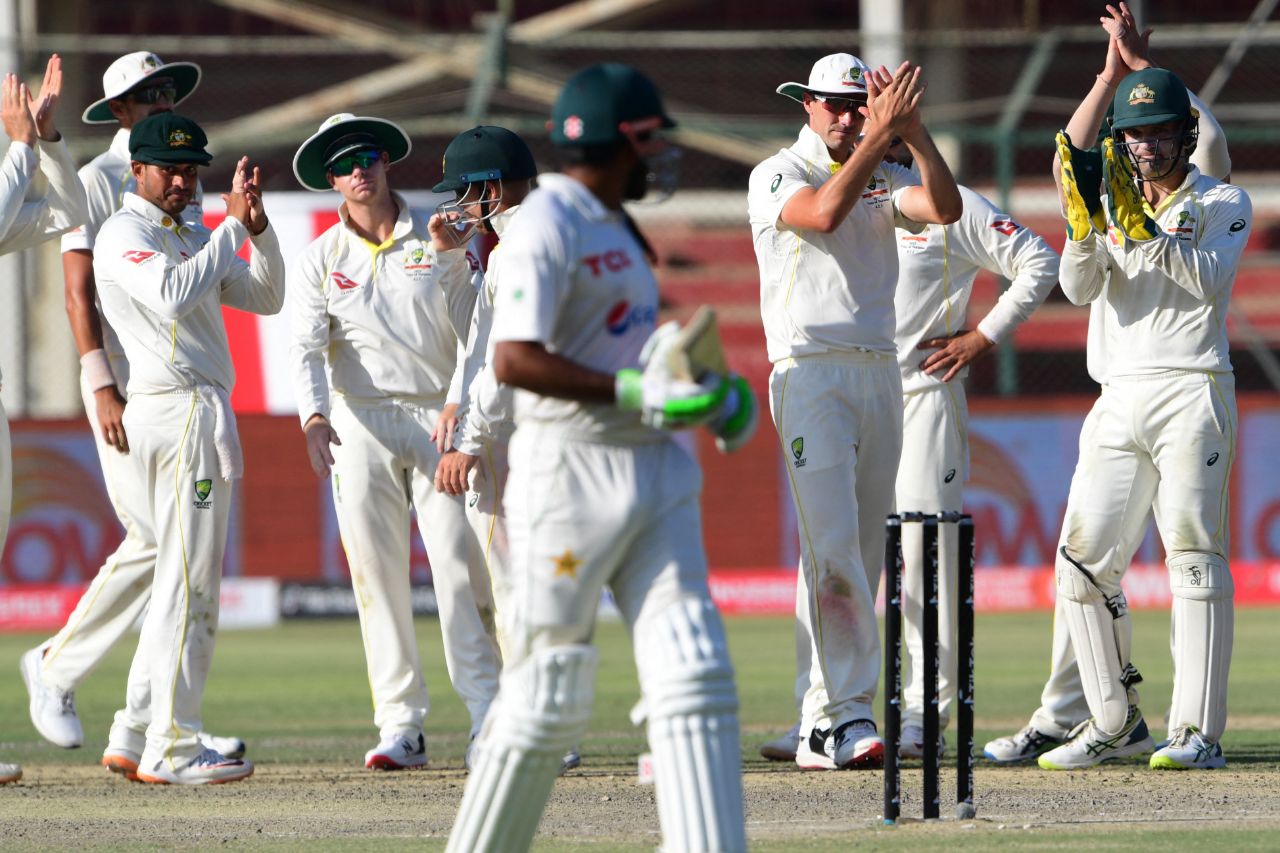
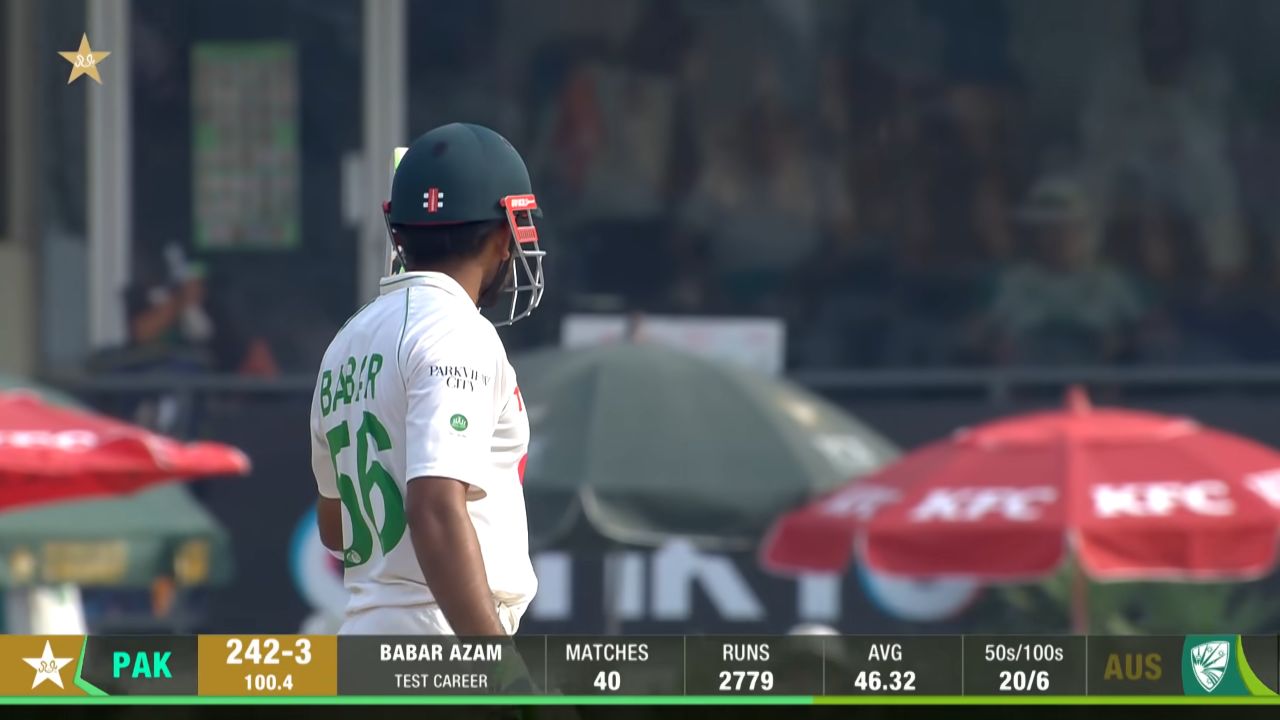

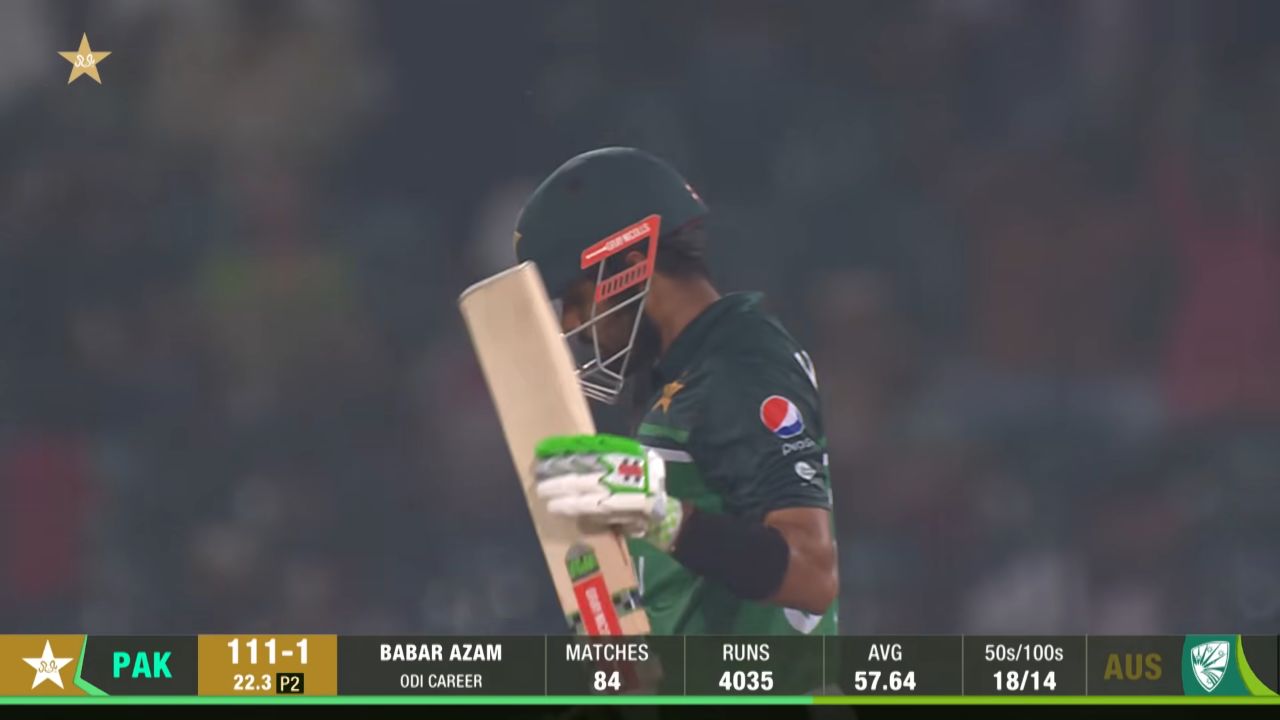

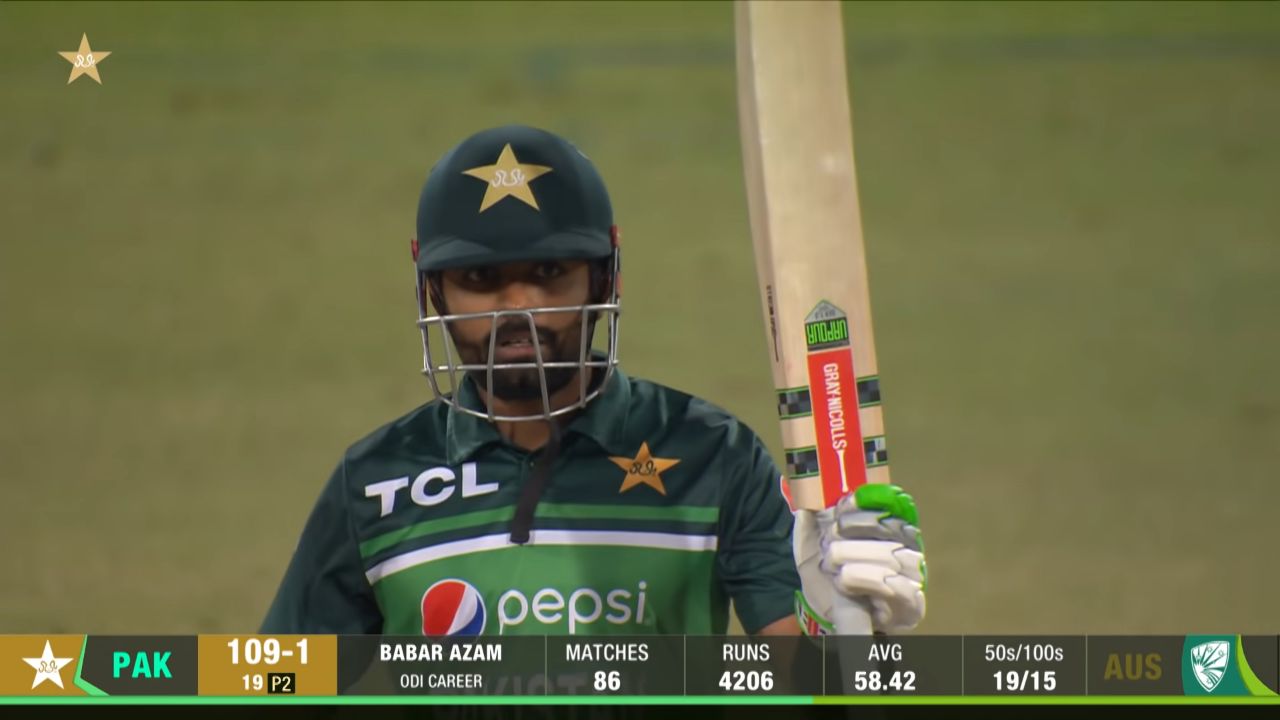








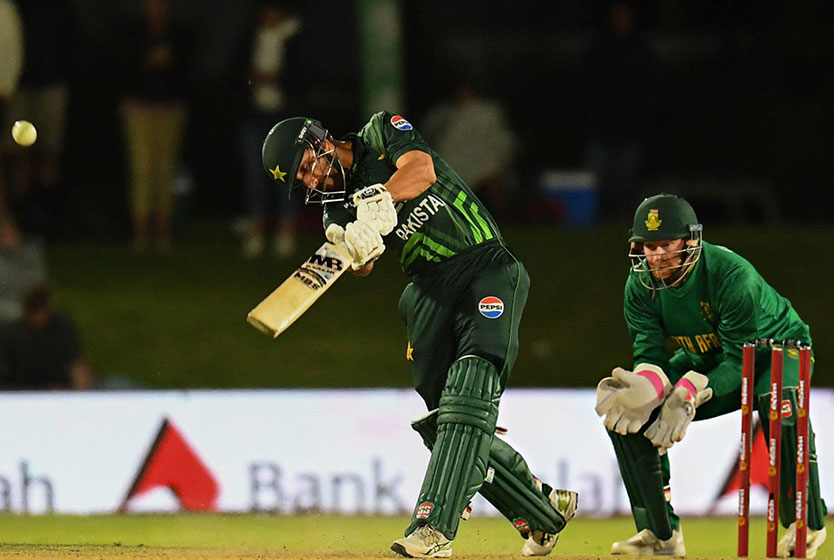
Leave a Reply